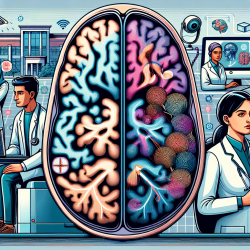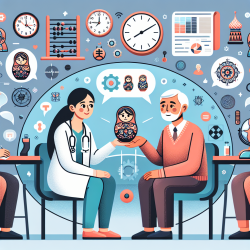Understanding the Impact of Sex Differences in Neuroimaging: A Guide for Practitioners
In the realm of neuroimaging, the role of sex as a biological variable is increasingly recognized as a critical factor influencing brain structure and function. A recent review article titled "Sex is a defining feature of neuroimaging phenotypes in major brain disorders" by Salminen et al. (2022) highlights the significance of sex differences in neuroimaging outcomes, particularly in the context of psychiatric and neurological disorders. This blog aims to elucidate the implications of these findings for practitioners and encourage further research in this domain.
Key Findings from the Research
The research underscores that sex differences are evident in the brain structures of both normative populations and those affected by various psychiatric and neurological disorders. These differences are often amplified in clinical samples where sex differences in disease risk, prevalence, and symptom expression are known. The study reviewed sex differences across 14 major brain disorders, providing a comprehensive understanding of how these differences manifest in structural and diffusion MRI outcomes.
Implications for Practitioners
Understanding sex differences in neuroimaging phenotypes can significantly enhance clinical practice in several ways:
- Personalized Treatment: Recognizing sex-specific brain phenotypes can lead to more tailored treatment plans that consider the unique neurobiological characteristics of male and female patients.
- Improved Diagnostic Accuracy: By incorporating sex differences into diagnostic criteria, practitioners can achieve more accurate diagnoses, particularly in disorders where sex plays a pivotal role.
- Enhanced Research Initiatives: Encouraging participation in large-scale neuroimaging initiatives such as the Enhancing NeuroImaging Genetics through Meta-Analyses (ENIGMA) consortium can provide valuable insights into sex-specific phenotypes, ultimately improving clinical outcomes.
Encouraging Further Research
While the current research provides a robust foundation, there are several areas where further investigation is needed:
- Clinical Sample Studies: More studies focusing on clinical samples with known sex differences in disease risk and prevalence are essential to fully understand the impact of sex on neuroimaging outcomes.
- Longitudinal Studies: Longitudinal research can help identify how sex differences in brain structure evolve over time and influence disease progression and treatment response.
- Integration of Multi-Modal Imaging: Combining structural and functional imaging modalities can offer a more comprehensive view of sex differences in brain disorders.
Conclusion
Incorporating sex differences into neuroimaging research and clinical practice is crucial for advancing our understanding of major brain disorders. Practitioners are encouraged to leverage the insights from this research to enhance diagnostic accuracy and treatment efficacy. By participating in large-scale initiatives and conducting further research, we can continue to uncover the intricate ways in which sex influences brain structure and function.
To read the original research paper, please follow this link: Sex is a defining feature of neuroimaging phenotypes in major brain disorders.










